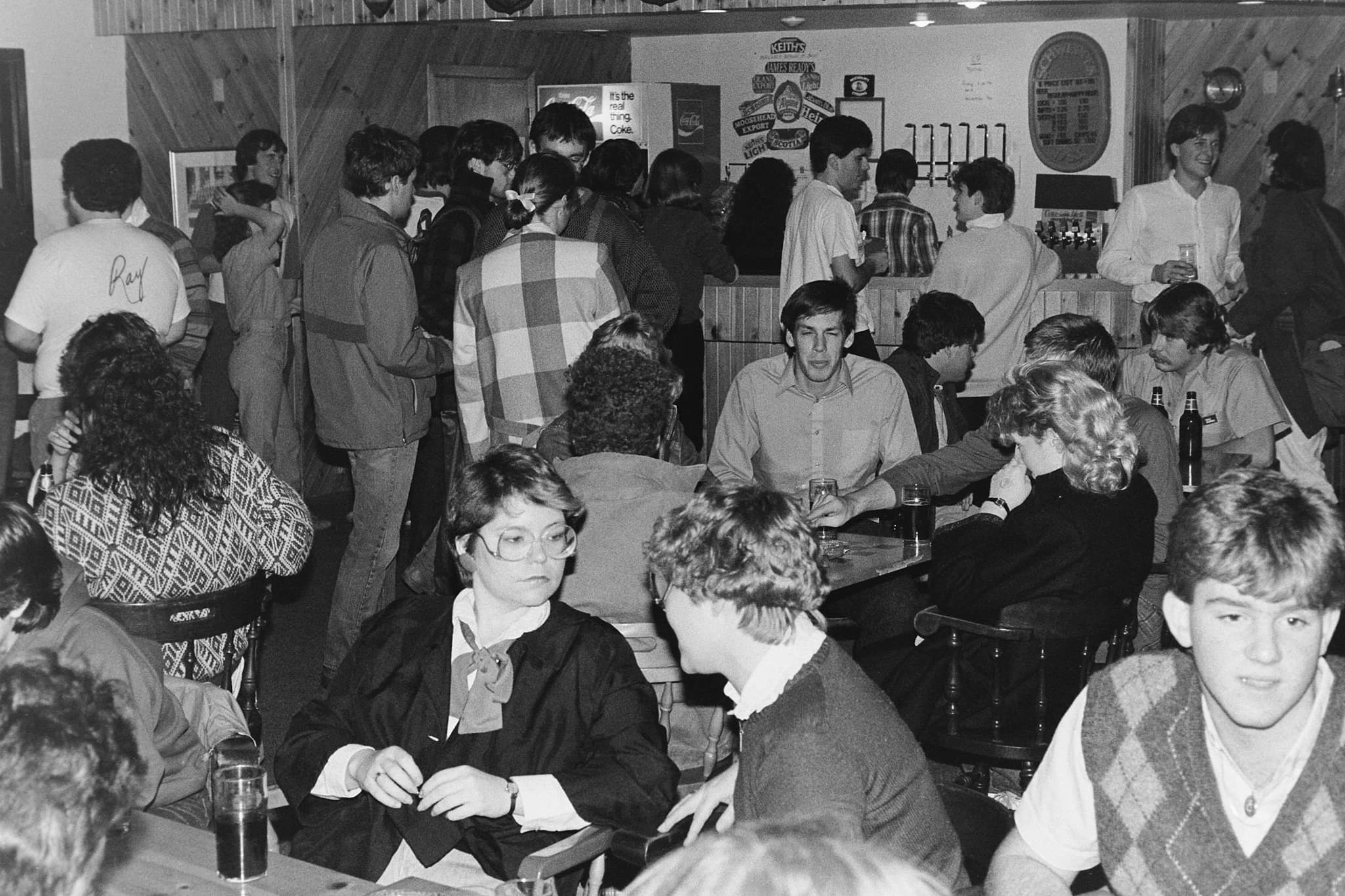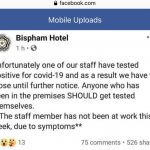 It’s normal now, right? All normal. Despite what we think and do, it’s definitely normal to get locked inside when the cold creeps in around the nooks and crannies in mid-October. Yet people are still running around outside, the massive idiots. Wear your masks! And don’t complain about sensible pandemic safety processes!! And write short sentences with many exclamation marks!!! Hmm… the only thing that has really ticked me off this week is I haven’t found any good images to plunk to the right of the first paragraph. Bet Max has something… let me check… nope. Jeff? Yup. Wear your masks.
It’s normal now, right? All normal. Despite what we think and do, it’s definitely normal to get locked inside when the cold creeps in around the nooks and crannies in mid-October. Yet people are still running around outside, the massive idiots. Wear your masks! And don’t complain about sensible pandemic safety processes!! And write short sentences with many exclamation marks!!! Hmm… the only thing that has really ticked me off this week is I haven’t found any good images to plunk to the right of the first paragraph. Bet Max has something… let me check… nope. Jeff? Yup. Wear your masks.
Now that that is clear, first up we have a post by Stan is always cause for some serious noting, especially as it relates to the sense of smell and does not advise that loss of the sense is tied to Covid-19:
Researchers at Kyushu University found that the olfactory sensory neurons can exhibit suppression or enhancement of response when odors are mixed, meaning that perception is not the simple sum of the odors. In their experiments, mice that were genetically modified to have their neurons emit green light depending on the amount of calcium ions in them — an indicator of activity — upon absorption of excitation light, the researchers were able to record the response of the neurons in the mice’s noses.
Mice. Noses. Little mousie noses. As with most things, I do not actually understand what is going on here but I trust and have a firm belief in science that gives me an abiding sense of comfort. I am also a good smeller. That sort of thing regularly appeared on my middle school report cards.
Aaaaannnd…. I also don’t understand this from an email received from Pellicle… exactly… which states they will be converting from $ to £:
With recent exchange rate fluctuations the amount getting paid to us has become an uncertain factor, and we’re aware that most of our supporters are UK-based, so this will also avoid any extra fees from your bank when you are paying in dollars. It means we’ll get stronger idea of what we’re receiving each month, and can build more concrete editorial plans in advance.
Govern yourselves accordingly. I do hope they still take my money. And I hope they take yours once you sign up, if only for pieces like this drinky travel piece taking us to rural England by Kate published this week under the title “With Provenance to Guide Us — Visiting The Moorcock Inn, West Yorkshire“:
It’s late February and sleeting sideways; the sky is an impressive shade of gritstone. Smoke plumes diagonally from the restaurant’s brick ovens outside, which have been slowly roasting mutton all night. Hot roast potatoes will be pulled from them throughout the afternoon, served with aioli as the bar snack of your dreams.
Kate also made the news. News? Oh. News! Oh, well. Let’s see what’s going on. Parts of Britain are now shutting again. In Glasgow, bar and restaurant workers dumped piles of ice in the street as a hospitality shutdown came in and the work went away. The commentary by, I assume, Jimmay is fabulous. Pub man Stonch unpacked an interesting aspect of the laws that applied in his area: the meaning of a “substantial meal”:
… this means the Coronavirus regs on this can be interpreted using case law relating to the ‘64 Act. In Timmis v Millman (a 1965 case) “a substantial sandwich accompanied by beetroot and pickles was a table meal”. So there you go. Get your beetroots ready, publicans!
And Mr. Mudge wrote on the same worthwhile issue:
If you are not going to have an objective yardstick such as price, then you will need to resort to a more subjective definition. Government minister Robert Jenrick* tied himself up in knots by saying that a Cornish pasty on its own wasn’t a substantial meal, but put it on a plate and add chips or salad and it magically becomes one. Few would dispute that a burger and chips would qualify, and the health-conscious should surely be allowed to substitute a salad for the chips. If a burger, then surely also a steak ciabatta, which is in principle the same kind of thing. And a cheese or hummus one for the vegetarians. Before too long, you have a cheese toastie with a couple of lettuce leaves qualifying.
You know… I don’t actually know what a toastie is exactly, either. I assume a toasted sandwich. Or a sandwich made of toast. That was on my middle school report cards too: “..the child thinks a toastie is a toasted sandwich… no hope…”
That’s pivoting. Everyone pivoting. Even though we are staying still. Here in Ontario, Ben has been writing upon his blog (taking a break from narrowcast poor radio impersonation) and decided that Covid-19 has been somewhat good for the Ontario booze trade or at least increased consumer access:
But there is an upside to this — if you’re the kind of person who can find the upside to a viral pandemic increasing our substance use – and it’s that the vigour with which we’ve all embraced the drink has actually had an affect on the availability, politics, and culture related to beer. Yes, this pandemic is a lot of things, most of them terrible, but it also might just be the best time to drink beer in Ontario.
Not necessarily a great deal for consumers medium or long term unless wholesale rates come down – but a good survival technique and good for us all to take part in now. New shops like Byward Market Wine Market (fine booze plus small takeaway meals) will be a next model… until the next next one comes.
In other good news here in eastern Ontario – as reported on Canadian Beer News and also discussed on OCBGTP – Slake Brewing in nearby Prince Edward County (just south of the very questionably named county seat of Picton) has opened. I post to remind myself to go.
Pivoting #2. Or is it #3? Or #4? Something called the Drinking Studies Network (that also looks a lot like a blog) posted “Threat or Opportunity? COVID-19 and Working Men’s Clubs” by Ruth Cherrington:
The post-COVID future of clubs could lie to some extent in drawing upon their enduring ethos and ideals which include their not-for-profit status. The 21st century setting has brought new challenges but also some tools that can help such as social media. With the usual club experience and contact with members impossible, club committee members had to make more use of Facebook, Twitter and other platforms. Nearly 9% of those surveyed used social media to build up the club’s community and membership over lockdown. Facebook groups became more important for clubs’ committees, especially to let members know what was happening, when they would be reopening and how.
I’d go to an old farts club if they had them around here. Maybe. Would I? Dad peeling potatoes in Yorkshire during the Berlin Airlift might even qualify me for the Legion. But would I go during these the early dark ages? Do I go anywhere? Well, other than the used record shop…
Unrelatedly, this thread on the habits of those in sports and entertainment who passed through this person’s former job at a hotel bar is fun: “Bob Seeger: Honestly he looked like anybodys grandpa with his flannel and orthopedic shoes“; “Stevie Nicks …difficult.” Remember hotel bars?
Now, in this week’s History Comes Alive corner, Gary is finding the time and steam power to get some of the beer history researched and writ… the opposite of my efforts, a personal failing that gnaws within me. One of many. This week he posted about the first draught beer sold in bottles and began with a handy definition:
Pasteurization is used in brewing, including for most imports and mass-marketed beers, not to make it safe for consumption as in the case of milk, say, but to render it stable from a microbiological aspect –bar to retard souring in particular. Thus, for modern, bright, bottled or canned beer that is not pasteurized, which is the first?* Coors beer is a notable early case, at least the domestic U.S. Coors.** Coors did not abandon pasteurization in bottles until 1959 though…
Elsewhere in space and time, Martin asked “where does Bristol end?” and found a pub that went all snug for Covid-19. BB2 replied: “One of our guidelines is unless there’s an open field separating it, it’s in Bristol.”
Beer… should reference something beery… The proper brewing of lager was discussed in Craft Beer & Brewing through a piece by Steve Holle of the KC Bier Company in Kansas City, Missouri:
Traditional lager brewing requires “more” than a typical ale fermentation. Because the “more” requires additional costs and resources to achieve very subtle, small, and incremental enhancements to flavor, there is always the temptation to take shortcuts by buying cheaper ingredients, skipping decoction, pitching less yeast, raising the fermentation temperature, shortening the conditioning time, or using artificial carbonation.
This neatly illustrates nicely the need for a separation of traditional lager from macro gak conceptually. I was thinking of that when I was writing back and forth with Jeff yesterday about his excellent SNPA post. Others were also thinking of proper lager brewing. Alistair was asking about if decoction mashing was practiced in Victorian Britain.
And finally, Kate Bernot has written about Canada’s ice beers… though sorta missed the twin towers of the phenomenon, Maximum Ice and all the future goth TV ads especially the one with The Smiths*, in favour of something about… a penguin. Still, it is a handy primer and notes importantly that the ice beer boom never busted as it traveled south:
Ice beers are a Canadian invention dating back to the early 1990s; they’re essentially stronger versions of the domestic lagers North Americans had been drinking for decades. American beer companies swiftly copied this “innovative” idea and mass-produced their own versions including Milwaukee’s Best Ice, Keystone Ice, Bud Ice, Busch Ice, and Natural Ice.
Why does it live on? It’s richer as well as stronger. So curlers dig the stuff. Goes with rye and K-Tel LPs.
There. Enough! I’m rating this a mid-grade week. Or maybe just a mid-grade post. Either way, another week has passed. Like the grains of sand passing through the hourglass, these are the days of our lives. Remember there’s Boak and Bailey mostly every Saturday, plus more at the OCBG Podcast on Tuesdays (this week Jordan shits on tweens!!!) and sometimes on a Friday posts at The Fizz as well. And sign up for Katie’s weekly newsletter, The Gulp, too. Plus the venerable Full Pint podcast. And Fermentation Radio with Emma Inch. There’s the AfroBeerChick podcast as well! And have a look at Brewsround‘s take on the beer writing of the week. Not to mention Cabin Fever. And Ben has finally gone all 2009 and joined in with his own podcast, Beer and Badword. And remember BeerEdge, too. Plenty of good writing. Only a little journalism. Journalism. Yup. Apparently all writing is ultimately… journalism. Sorry Shakespeare. You aren’t in any give-away trade papers.
*Someone at the Labatt PR firm back then knew the value of good music in a beer ad.














